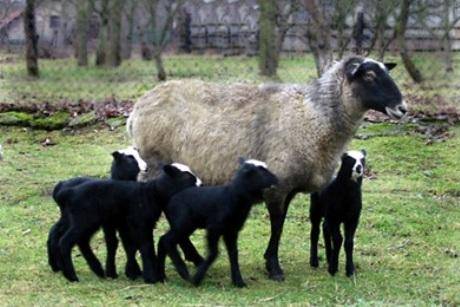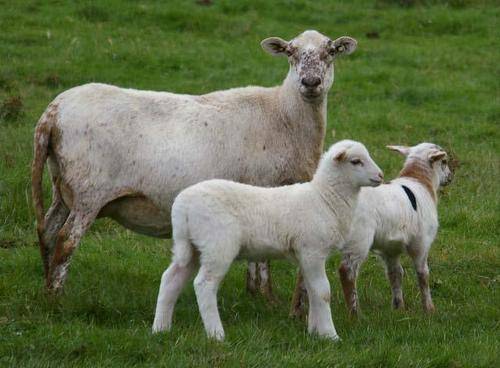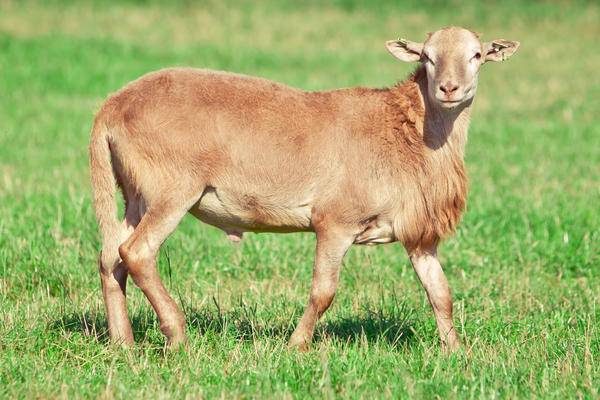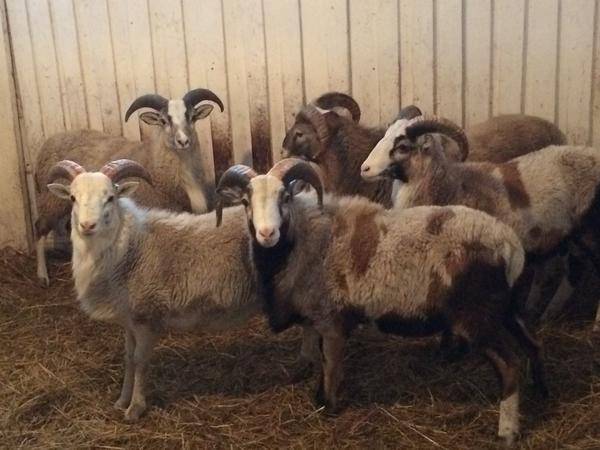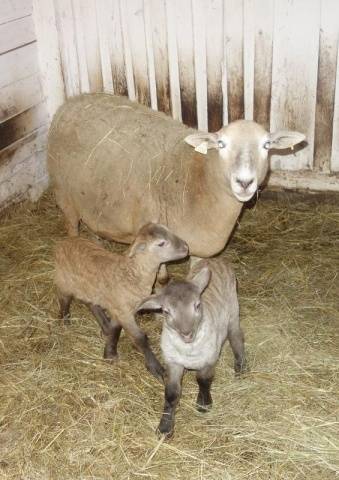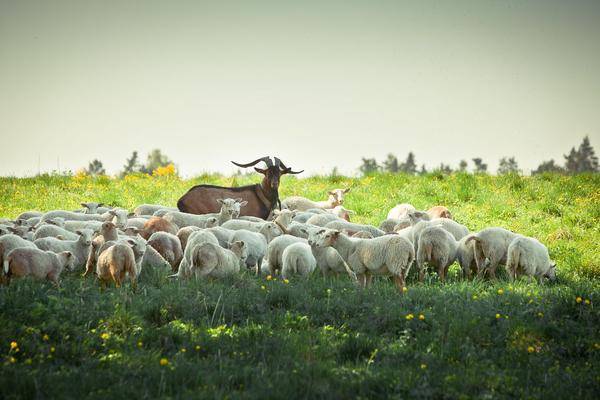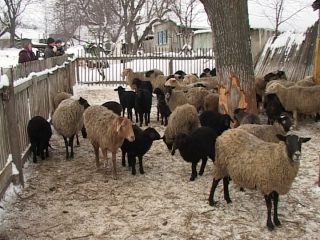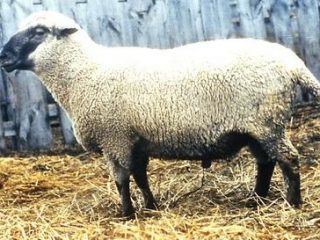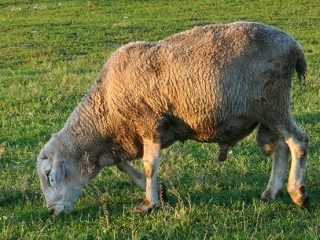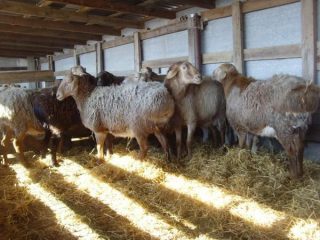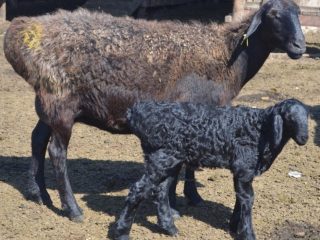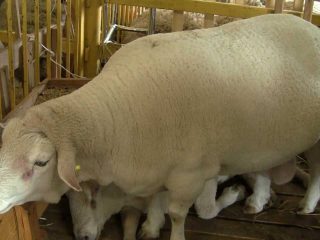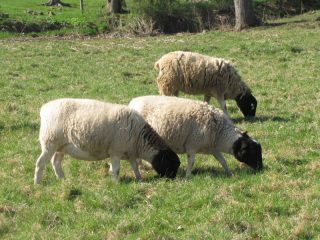Content
With the development of industrial technologies, sheep are beginning to repeat the fate of fur-producing rabbits, the demand for whose skins is not great today. Today, synthetic materials are often warmer than natural furs, and advocates of environmentally friendly products are also in no hurry to buy natural furs, since to obtain natural fur one must kill an animal.
Sheep do not need to be killed to obtain wool, but wool is more expensive than padding polyester and does not provide as much warmth. Today, high-status wool products are made from the wool of llamas and alpacas with the addition of wool angora goat or angora rabbit. Even the wool of Merino sheep has become less valuable. Coarse sheep's wool costs almost nothing. Shearling coats made from sheepskin also went out of fashion.
The Katum breed of meat sheep owes its appearance to the low demand for coarse wool sheepskins.
Katumsky sheep are a young breed, or rather, it is not a breed yet, it is a breed group of sheep made up of crosses of Romanov fur sheep with the American meat breed of Katahdin sheep. The first mention of Katum sheep was found only in 2013.
The breed group received its name from the area in the Leningrad region where it began to be bred. The farm engaged in breeding the Katum breed group of sheep is also called “Katum” today.
Motives for the appearance of the Katum breed group of sheep
The owners of the Katumy private farm began breeding sheep back in the 90s. At that time, these were Romanov rough-wool sheep - an excellent breed, well adapted to the Russian climate and characterized by prolific fertility.
But it turned out that the main product of the Romanov sheep: skins, is no longer popular due to the emergence of new materials for clothing. The quality of the meat of Romanov sheep, although it was not bad, was not enough to pay off the production.
Romanov sheep spent too many of the body's resources on growing their famous fur coat, instead of spending them on building muscle mass.
The owners of Katuma began to look for other ways to develop production. They needed a sheep that was well adapted to the Russian climate, unpretentious in nutrition, prolific, with good (broiler) weight gain. In Russia there is no required breed. There are either merino, fur coat, or meat-fat breeds. What was needed was a meat breed that was not prone to accumulating fat.
The required breed was found in the USA. The same problem exists there: the demand for sheepskins and sheep's wool is falling, while the demand for lamb is growing. The American Katahdin beef breed was bred in Maine in the second half of the 20th century for the same reasons that the Katuma owners took up the development of the Russian beef breed: low demand for wool and high demand for meat.
The photo shows a Katahdin ewe with two lambs.
In America, the demand for smooth-wool sheep for meat production is growing, and breeding sheep are also becoming more expensive.
Elite Katahdin rams were imported from the USA to the Leningrad region and crossed with dams of the Romanov breed.
The goal was to return to the wild version of the coat in animals with the elimination of the long hair mutation and a high yield of high-quality meat from the carcass.
It was simply impossible to bring Katahdins to Russia, since the goal was to obtain a breed that would produce offspring like Romanov sheep (3-4 lambs per lamb) and be capable of year-round breeding and, at the same time, like Katahdins, good for fattening muscle mass in the absence of wool , which must be cut at least once a year.
Description of the breed group of Katum sheep
The selection of Katum residents was carried out strictly; individuals that did not meet the necessary requirements were mercilessly discarded. As a result, today, although it is too early to register a breed group as a new breed, the desired traits are clearly visible in the population:
- ordinary natural fur of a wild animal;
- multiple births of Romanov goats;
- the ability to come into heat and lamb year-round;
- good gain of muscle mass. Month-old lambs weigh 12 – 15 kg;
- excellent taste of meat. If you believe those who tried Katum lamb at the Golden Autumn agricultural exhibition in 2014.
The breeders themselves note that the meat of their sheep, in its characteristics, is fundamentally different from ordinary lamb in the absence of a specific taste and resembles veal.
The color of animals in the population is mainly fawn or light red with slight piebaldity.
Advantages of the Katum breed group:
- large size. Rams grow up to 110 kg. Ewes up to 80 kg;
- short hair, although, judging by the photo, the influence of the Romanov queens is still felt and the Katumians are not truly smooth-haired;
- no need for haircut;
- disease resistance inherited from kathadines;
- the weight of a ram at 1.5 years is 100 kg;
- multiple births.2 – 3 lambs per lamb is the norm for Katum residents;
- the ability to withstand Russian frosts in a pen equipped with shelter from the wind;
- long life expectancy. Katumians are capable of reproduction up to 10 years;
- a philosophical outlook on life, in the sense of an easy-going disposition.
The photo shows an 8-month-old lamb, weight 65 kg.
Although the work with Katum sheep has not yet been completed, sheep are already able to acquire undercoat for the winter, shedding it independently in the spring and leaving only guard hair for the summer. When keeping them outside in the cold, it is necessary to provide the sheep with hay to allow self-warming. If there are heated drinkers with warm water, feed consumption in winter is reduced by 30%.
Some sheep farmers who were interested in this breed group looked for information about the arrival of mouflon to the Katum population. The owner of the private household plot "Katumy" denied this information. Previously, the farm bred semi-wild sheep for hunting, mixing the Romanov breed and mouflon. The photo shows a cross between mouflon and Romanovskaya.
This business turned out to be unprofitable and was closed. The “hunting” livestock has been sold out.
Real Katumians are polled.
The presence of a horned individual in the flock is explained by the fact that it is not a ram, but ibex, “working” as a leader in a flock of Katumi fairies.
Conclusion
The question of interested sheep breeders about whether Katumy is a breed registered in the State Register of Russia was ignored by the owner of the Katumy private farm. Which shows that most likely the Katumians have not yet been registered as a breed. This is not surprising, since so far no more than 8 generations of Katum sheep have been obtained.Segregation by genotype and culling of individuals that do not meet the desired standard will continue for at least 10 years before the breed group is recognized as a breed. Nevertheless, the direction is very interesting and there is no doubt that with the capabilities and knowledge of the owner of “Katuma”, the new breed will be registered. Now “Katums” sell excess breeding young animals into private hands and sheep farmers who are tired of shearing sheep have the opportunity to buy smooth-wooled lambs with tasty meat.
